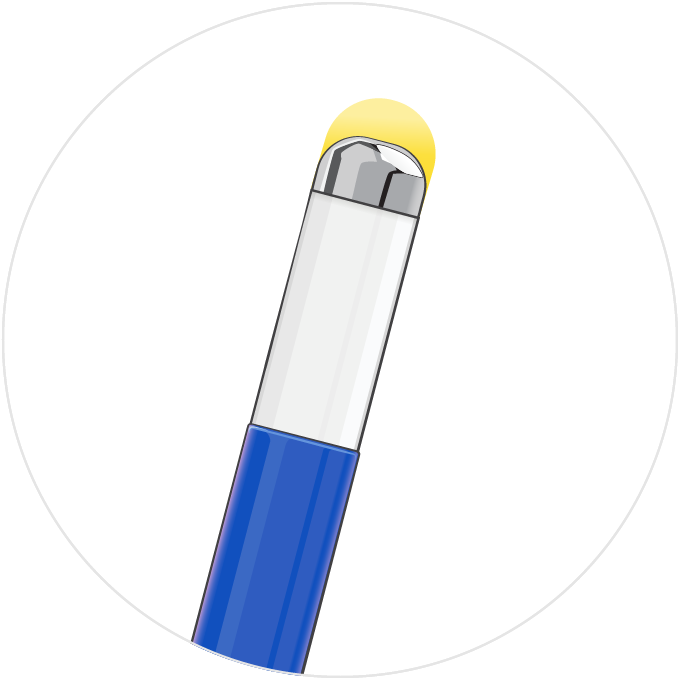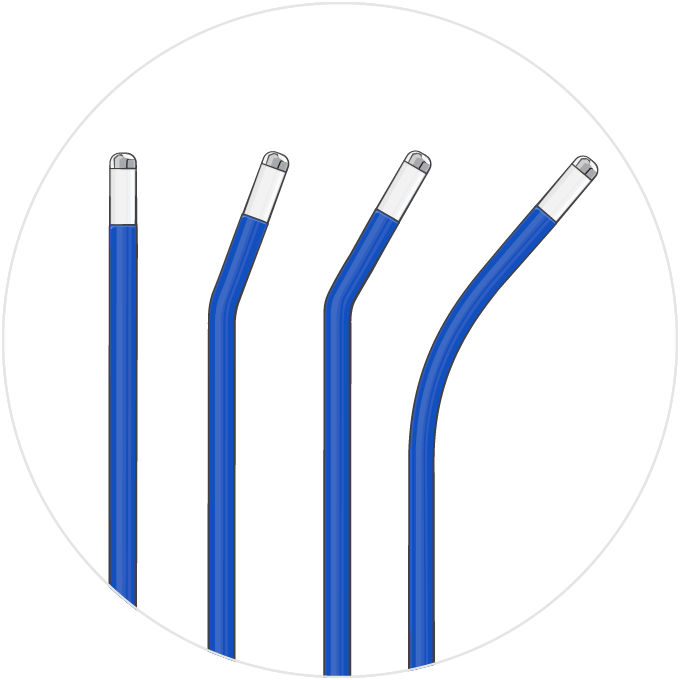INDICATIONS FOR USE
The PowerWire RF GuideWire is indicated for creating a channel in totally occlusive peripheral vascular disease, for enhancing the potential for limb preservation. In the USA, the PowerWire RF GuideWire is cleared for creating a channel in totally occluded peripheral vessels 3mm or greater. The intended use of the RFP-100A Connector Cable is to connect the RFP100A BMC Radiofrequency Puncture Generator to a PowerWire RF GuideWire.
CONTRAINDICATIONS
The PowerWire RF GuideWire is not recommended for use with any conditions that do not require creation of a channel in biological material. The RFP-100A Connector Cable included in the Power Wire Kit is not recommended for use with any other RF generator or any other device.
WARNINGS
Only physicians with a thorough understanding of angiography and percutaneous interventional procedures should use the PowerWire Radiofrequency GuideWire. It is recommended that physicians avail themselves of pre-clinical training, a review of pertinent literature and other appropriate education before attempting new interventional procedures.
The PowerWire RF GuideWire is supplied STERILE using an ethylene oxide process. Do not use if the package is damaged.
The PowerWire RF GuideWire and RFP-100A Connector Cable are intended for single patient use only. Do not attempt to clean, resterilize or re-use either device. Reuse can cause the patient injury and/or the communication of infectious disease(s) from one patient to another. The PowerWire RF GuideWire must be used with the Baylis Connector Cable. Attempts to use it with other connector cables can result in electrocution of the patient and/or operator.
The RFP-100A Connector Cable must only be used with the RFP100A Generator and the PowerWire RF GuideWire. Attempts to use it with other RF Generators and devices can result in electrocution of the patient and/or operator.
For Baylis RF Generator units where power is adjustable, do not attempt to deliver radiofrequency energy with an initial power setting of greater than 10 Watts. In subsequent attempts, the power setting can be increased, if necessary.
The active tip of the PowerWire RF GuideWire is fragile. Be careful not to damage the tip while handling the PowerWire RF GuideWire. If the tip becomes damaged, discard the PowerWire RF GuideWire immediately.
If the active tip of the PowerWire RF GuideWire becomes bent at any time during its use, dispose of the PowerWire RF GuideWire immediately. Do not attempt to straighten the active tip.
Laboratory staff and patients can undergo significant x-ray exposure during radiofrequency cutting procedures due to the continuous usage of fluoroscopic imaging. This exposure can result in acute radiation injury as well as increased risk for somatic and genetic effects. Therefore, adequate measures must be taken to minimize this exposure.
PRECAUTIONS
Do not attempt to use the PowerWire RF GuideWire Kit or ancillary equipment before thoroughly reading the accompanying Instructions for Use.
Radiofrequency interventional procedures should be performed only by physicians thoroughly trained in the technique in an operating room fully equipped for interventional procedures and/or a fully equipped catheterization laboratory.
The sterile packaging should be visually inspected prior to use to detect any compromise. Ensure that the packaging has not been damaged. Do not use the equipment if the packaging has been compromised. Visually inspect the PowerWire RF GuideWire and the RFP-100A Connector Cable to ensure there is no cracking or damage to the insulating material. Do not use if the equipment is damaged.
Do not use the PowerWire RF GuideWire Kit after the “Use By” date indicated on the label.
The PowerWire RF GuideWire is intended for use with only those devices listed in section VII “Equipment Required.” The RFP-100A Connector Cable is intended for use with the PowerWire RF GuideWire only. Read and follow the manufacturer’s instructions for use of the Disposable Indifferent (Dispersive) Patch (DIP) electrode. Always use DIP electrodes that meet or exceed IEC 60601-2-2 requirements.
Placement of the dispersive electrode on the thigh could be associated with higher impedance.
In order to prevent the risk of ignition, make sure that flammable material is not present in the room during radiofrequency power application.
Take precautions to limit the effects that the electromagnetic interference (EMI) produced by the Generator may have on the performance of other equipment. Check the compatibility and safety of combinations of other physiological monitoring and electrical apparatus to be used on the patient in addition to the Generator.
Adequate filtering must be used to allow continuous monitoring of the surface electrocardiogram (ECG) during radiofrequency power applications.
Careful manipulation of the PowerWire RF GuideWire must be performed to avoid vessel trauma. PowerWire RF GuideWire advancement should be done under fluoroscopic guidance. If resistance is encountered, DO NOT use excessive force to advance or withdraw the PowerWire RF GuideWire.
Do not attempt to deliver radiofrequency energy until the tip of the PowerWire RF GuideWire is confirmed to be in good contact with the target biological material.
Do not bend the PowerWire RF GuideWire or the RFP-100A Connector Cable. Excessive bending or kinking of either device may damage the integrity of the device and may cause patient injury. Care must be taken when handling the PowerWire RF GuideWire and the RFP-100A Connector Cable.
It is recommended not to exceed twenty (20) radiofrequency power applications per PowerWire RF GuideWire.
The Generator is capable of delivering significant electrical power. Patient or operator injury can result from improper handling of the PowerWire RF GuideWire and/or DIP electrode, particularly when operating the device.
During power delivery, the patient should not be allowed to come in contact with ground metal surfaces.
Do not activate RF whilst tip is within catheter.
Care must be taken to verify the compatibility of the PowerWire RF GuideWire when used with catheters.
Never disconnect the RFP-100A Connector Cable from the RFP-100A Generator while the Generator is delivering RF power.
Never disconnect the RFP-100A Connector Cable from the RFP-100A Generator by pulling on the cable. Failure to disconnect the cable properly may result in damage to the cable.






